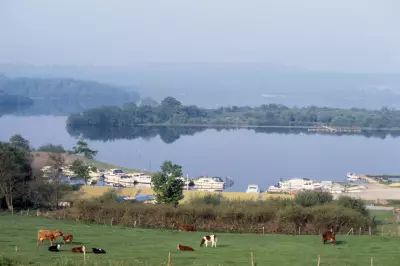
A dramatic confrontation is unfolding across Victoria's rugged landscapes as rock climbers openly defy newly imposed bans at sacred Indigenous sites. The climbing community has launched a coordinated campaign urging enthusiasts to continue scaling controversial rock faces, despite government restrictions designed to protect areas of profound cultural significance.
Heritage Protection Versus Recreational Access
At the heart of the dispute lies a fundamental conflict between preserving ancient cultural heritage and maintaining access to world-class climbing destinations. Parks Victoria has implemented sweeping restrictions across several prominent sites, including the culturally significant Gariwerd area, following extensive consultations with Traditional Owner groups.
"These places are not just rocks to be climbed - they are living cultural landscapes that hold thousands of years of stories and connection for our people," explained a representative from the Eastern Maar Aboriginal Corporation.
Climbing Community Mounts Resistance
The climbing community has responded with organised defiance, arguing that the bans represent an overreach that threatens their sport's very existence in the region. Social media channels and climbing forums have become hotbeds of activism, with prominent climbers sharing videos of themselves scaling restricted areas.
"We respect Indigenous culture, but these blanket bans ignore decades of responsible climbing practices and our community's willingness to work collaboratively," said one veteran climber, who requested anonymity due to ongoing discussions with authorities.
Economic and Tourism Implications
The standoff carries significant economic consequences for regional towns that have built thriving tourism industries around climbing. Local businesses report cancellations and declining bookings as uncertainty grips the climbing community.
"This isn't just about climbing - it's about the livelihoods of people in regional communities who depend on outdoor tourism," noted a climbing gear shop owner from the Grampians region.
Government Stands Firm on Protection Measures
Authorities remain steadfast in their position, emphasising the legal and moral imperative to protect Indigenous cultural heritage. Recent legislative changes have strengthened protections for Aboriginal cultural assets, with significant penalties for violations.
"The protection of Aboriginal cultural heritage is non-negotiable," stated a spokesperson for Parks Victoria. "We're committed to working with all user groups to find sustainable solutions that respect both culture and recreation."
Searching for Common Ground
Despite the current impasse, some climbing advocates continue to pursue dialogue with Traditional Owners and government bodies. They propose managed access agreements, educational programs, and designated climbing zones as potential compromises.
"We believe there's a middle path that protects the most sensitive cultural sites while allowing climbing to continue in appropriate areas," said a representative from Access Rec, a climbing advocacy group.
As the conflict escalates, both sides acknowledge that the outcome will set important precedents for how Australia balances recreational access with cultural preservation in its most treasured natural landscapes.





